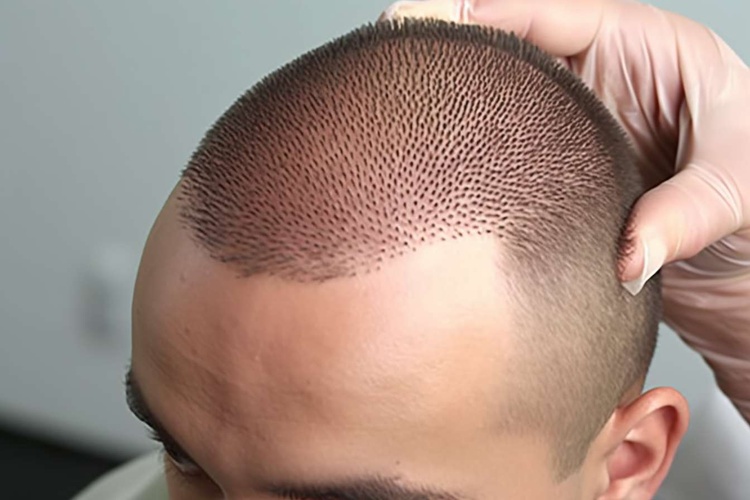Is Hair Transplantation the Right Solution for You?
Hair loss can be a distressing experience for many individuals, affecting self-esteem and confidence. As a potential solution, hair transplantation has gained popularity in recent years. This article will explore the intricacies of hair transplantation, helping you determine if it's the right choice for your hair restoration journey.

What is hair transplantation and how does it work?
Hair transplantation is a surgical procedure that involves moving hair follicles from one area of the body (typically the back or sides of the head) to areas experiencing thinning or baldness. The process relies on the principle that certain hair follicles are genetically resistant to balding. By relocating these resilient follicles, surgeons can create a fuller, more natural-looking head of hair.
The two primary methods used in hair transplantation are Follicular Unit Transplantation (FUT) and Follicular Unit Extraction (FUE). FUT involves removing a strip of scalp and dissecting it into individual follicular units, while FUE extracts individual follicles directly from the donor area. Both techniques have their advantages, and the best hair transplant method depends on individual factors such as hair type, extent of hair loss, and personal preferences.
Who is an ideal candidate for hair transplantation?
Not everyone experiencing hair loss is a suitable candidate for hair transplantation. Ideal candidates typically:
-
Have sufficient donor hair in areas unaffected by balding
-
Are in good overall health
-
Have realistic expectations about the outcome
-
Have experienced stabilized hair loss
-
Are over 25 years old, as hair loss patterns become more predictable with age
It’s essential to consult with a qualified hair restoration specialist to determine if you’re a good candidate for the procedure. They will assess your hair loss pattern, scalp condition, and overall health to provide personalized recommendations.
What are the potential risks and side effects?
While hair transplantation is generally considered safe, like any surgical procedure, it carries some risks. Potential side effects may include:
-
Infection
-
Bleeding
-
Scarring
-
Unnatural-looking hair growth
-
Temporary shock loss of transplanted hair
-
Numbness or lack of sensation in treated areas
Most side effects are temporary and resolve on their own. However, it’s crucial to choose a reputable surgeon and follow post-operative care instructions carefully to minimize risks and ensure optimal results.
How long does the hair transplantation process take?
The duration of a hair transplantation procedure can vary depending on the extent of hair loss and the technique used. Typically, a session can last anywhere from 4 to 8 hours. Some patients may require multiple sessions to achieve desired results, especially if they have extensive hair loss.
It’s important to note that while the procedure itself may be completed in a day, the full results of hair transplantation take time to manifest. New hair growth usually begins within 3 to 4 months after the procedure, with final results visible after 12 to 18 months.
What are the latest advancements in hair transplantation?
Hair transplantation techniques have evolved significantly over the years, offering more natural-looking results and minimizing scarring. Some recent advancements include:
-
Robotic-assisted FUE: Utilizing advanced imaging and precision robotics to enhance the accuracy of follicle extraction
-
Platelet-rich plasma (PRP) therapy: Using the patient’s own blood plasma to stimulate hair growth and improve transplant success rates
-
Long-hair FUE: Allowing patients to see immediate results by transplanting longer hair follicles
-
Direct hair implantation (DHI): A modified FUE technique that allows for more precise placement of hair follicles
These innovations have improved both the efficiency of the procedure and the quality of results, making hair transplantation an increasingly attractive option for those seeking hair restoration.
What is the cost of hair restoration in Canada?
The cost of hair transplantation in Canada can vary significantly depending on factors such as the extent of hair loss, the technique used, and the surgeon’s expertise. Generally, prices range from CAD 5,000 to CAD 15,000 or more for a full procedure.
Here’s a comparison of estimated costs for different hair transplantation methods in Canada:
| Method | Average Cost Range (CAD) | Typical Graft Count |
|---|---|---|
| FUT | 5,000 - 10,000 | 1,000 - 3,000 |
| FUE | 7,000 - 15,000 | 1,000 - 3,000 |
| Robotic FUE | 10,000 - 20,000 | 1,000 - 3,000 |
Prices, rates, or cost estimates mentioned in this article are based on the latest available information but may change over time. Independent research is advised before making financial decisions.
It’s important to note that while cost is a significant factor, it shouldn’t be the only consideration when choosing a hair transplant provider. The surgeon’s experience, clinic reputation, and the quality of results should also play a crucial role in your decision-making process.
In conclusion, hair transplantation can be an effective solution for many individuals struggling with hair loss. By understanding the procedure, its potential risks, and associated costs, you can make an informed decision about whether it’s the right choice for you. Always consult with a qualified hair restoration specialist to discuss your specific situation and explore the best options for your hair restoration journey.
This article is for informational purposes only and should not be considered medical advice. Please consult a qualified healthcare professional for personalized guidance and treatment.






